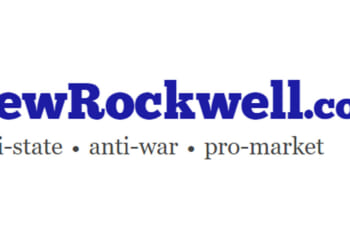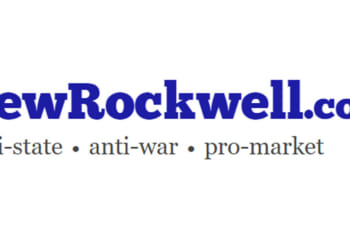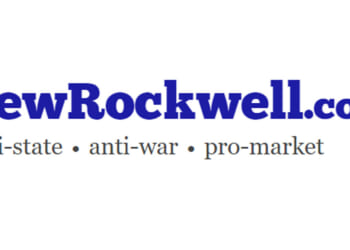from the weaponizing-litigation-for-fun-and-for-profit dept
Imagine a leading American technology firm, the engine of thousands of jobs and critical innovation, besieged by a patent lawsuit. Typical enough, but this time there is a twist: The plaintiff is a shell company with no assets and no products, yet it litigates with the inexhaustible resources of a global superpower. The American company is forced to spend millions on defense, all while fighting in the dark, unaware that the true adversary funding the assault is a sovereign wealth fund controlled by a geopolitical rival.
This is not a hypothetical scenario. It is the reality of third-party litigation funding. This secretive, multi-billion-dollar industry has turned our courtrooms into a speculative asset class. Litigation funding allows outside investors—hedge funds, private equity firms, and even foreign governments—to secretly purchase a financial stake in a lawsuit in exchange for a portion of any award or settlement. The current lack of mandatory disclosure for these arrangements in U.S. federal courts has created a dangerous blind spot. It allows foreign adversaries to weaponize our own justice system against us, posing a direct threat to American technological leadership and national security. Principled, targeted transparency is not merely a procedural nicety; it is a national imperative.
Growth of a Shadow Industry
The litigation funding market has grown exponentially, from a niche practice to an industry with major funders managing over $15 billion in U.S. litigation assets. This rise in speculative capital fundamentally alters the dynamics of justice. With no uniform federal rule requiring disclosure, the decision to unmask a funder is left to the discretion of individual judges, creating an inconsistent and easily exploited patchwork of local rules.
This secrecy infects the legal process. Settlement negotiations, traditionally a two-party affair, are distorted by the presence of a hidden, typically profit-motivated stakeholder whose sole objective is maximizing return on investment. Many litigation funding contracts contain “waterfall” clauses that require the funder to be repaid its investment, often with a multiple of two or three times, before the plaintiff receives a single dollar. This structure creates a powerful incentive to reject reasonable settlement offers that would satisfy the actual parties but fail to meet the funder’s high-return threshold. The case of food distributor Sysco, which alleged in court that its funder, Burford Capital, blocked reasonable settlements in a $140 million-plus funding deal, is a stark illustration of funders controlling litigation to protect their investment.
The discovery process, a cornerstone of American civil procedure, is similarly weaponized. When the funder is a secret competitor or a foreign state, discovery becomes a backdoor for corporate espionage. An adversary can fund a lawsuit against a U.S. tech or defense firm specifically to gain legal access to trade secrets, proprietary technology, and sensitive business plans. The defendant is left with an impossible choice: hand over confidential data to an unknown enemy or pay a nuisance settlement to make the case disappear.
This problem is particularly acute in patent litigation. The Government Accountability Office reports that most large technology companies believe over half the patent infringement suits they face are backed by third-party litigation funders, often involving weak claims. These lawsuits, frequently brought by “patent trolls”—entities that produce nothing but exist only to sue innovators—act as a tax on American ingenuity, forcing companies to divert capital from R&D to legal defense costs.
A Tool for Foreign Adversaries
The most alarming threat is the use of TPLF by foreign adversaries as a tool of asymmetric warfare. A sovereign wealth fund can finance harassing litigation to drain a U.S. competitor’s resources, damage its reputation, and stifle its innovation pipeline—achieving a strategic victory even if the lawsuit ultimately fails.
The potential for foreign interference is high. More than half of new U.S. patents granted in 2024—approximately 180,000—went to foreign companies, with China taking a large share. Thousands of those patents went to entities that are controlled by the Chinese Communist Party and do not operate within the United States.
These foreign-owned patents empower companies controlled by or working at the behest of foreign governments, to sue companies operating in this country. Such lawsuits, covering thousands of patents, can drain resources, distract strategy, and derail research and development for the innovative American companies targeted by the litigation, and under the current rules, the foreign countries can execute this strategy without disclosing who is funding the litigation. The United States is essentially giving foreign governments a ticket to steal U.S. trade secrets under a cloak of anonymity.
This threat is now a documented reality. A Bloomberg investigation revealed that a subsidiary of a Russian conglomerate with ties to Vladimir Putin has funded lawsuits in the U.S. while its founders were under international sanctions. In another case, only revealed due to a Delaware judge’s standing order, a Chinese litigation funder was found to be financing intellectual property lawsuits against Samsung in U.S. courts. And Fortress Investment Group, a major litigation funder now majority-owned by an Abu Dhabi sovereign wealth fund, has financed aggressive patent suits against American tech giants like Intel.
Pathways to Reform
Congress is now considering several proposals to bring this shadow industry into the light. The solutions reflect different diagnoses of the core problem. Rep. Darrell Issa’s Litigation Transparency Act (H.R. 1109) offers a straightforward, comprehensive solution: require disclosure of the funder and the funding agreement in all federal civil cases. Rep. Ben Cline’s Protecting Our Courts from Foreign Manipulation Act (H.R. 2675) is more proscriptive, requiring disclosure of foreign funders while outright banning foreign governments and sovereign wealth funds from investing in U.S. litigation. A third bill by Sen. Thom Tillis, the Tackling Predatory Litigation Funding Act (S. 1821), uses the tax code to disincentivize litigation funding by imposing a steep tax on funders’ profits, eliminating a loophole that allows some foreign investors to pay no U.S. tax on their gains.
The primary criticism of broad disclosure, embodied by the Issa bill, is that it could have a chilling effect on funding for legitimate civil rights or public interest lawsuits. Funders may be unwilling to support controversial causes if their identity is exposed to public backlash. This concern may create unusual political alliances, as both progressive and conservative groups rely on strategic litigation to advance their agendas and may fear the effects of transparency on their donors.
The political reality of these concerns was on full display during a House Judiciary Committee markup just this week. While Rep. Cline’s targeted measure to block foreign adversaries, H.R. 2675, was reported favorably, Rep. Issa’s broader transparency bill, H.R. 1109, failed to reach a vote following strong opposition from a coalition of conservative organizations. In a letter to congressional leadership, some conservative groups argued that the “sweeping disclosure mandates” in H.R. 1109 would violate donor privacy and chill free speech by exposing supporters of sensitive causes to harassment. While acknowledging the urgent need to stop foreign manipulation of the courts, these critics argued for a narrower legislative approach that protects national security without compromising the confidential associations of American citizens.
Transparency in patent litigation raises none of these concerns. The patent is not a civil right, but a grant of a franchise, and its effects are entirely economic. The civil rights interests that surround who funds advocacy around a legislative or issue campaign are absent. On the other side of the ledger, there is no legitimate interest to protect the ability of foreign adversaries to covertly interfere in American business and innovation. Semiconductor companies should know who is behind invasive discovery requests into sensitive advanced manufacturing technology, generative AI developers should know who is attacking and dissecting the inner workings of their AI models, and retailers should know who is using weak patents to disrupt, for example, basic online sales technology like the use of online shopping carts. The stakes in such cases are focused on the parties, technology, and discovery requested—defendants have a right to know who is suing them.
An Urgent and Achievable Goal
Despite these complexities, something needs to change. Defendants have a right to know the identity of their true adversary. More urgently, the stakes of allowing foreign governments to secretly manipulate our courts are simply too high. American leadership in generative AI and advanced manufacturing can be disrupted and undermined through abusive litigation—we need to know who is behind such lawsuits. The national security threat is not speculative; it is happening now.
We can target the most egregious threats with a bipartisan solution. An approach that focuses on transparency in high-risk commercial litigation and blocking foreign-state interference is desperately needed. The favorable committee vote on Rep. Cline’s bill is encouraging—continued support for H.R. 2675 as it moves forward is key—but the opposition to a disclosure requirement in Rep. Issa’s bill is misguided. Even if a carve-out is needed for non-profit, mission-driven litigation, we must act to secure our courts from foreign manipulation and protect the intellectual property that fuels our economy. This is not a partisan issue. Secret misuse of American courts must end.
Nathanael Andrews is Senior Associate Counsel for the Software & Information Industry Association
Filed Under: litigation finance, patent trolls, patents, transparency













